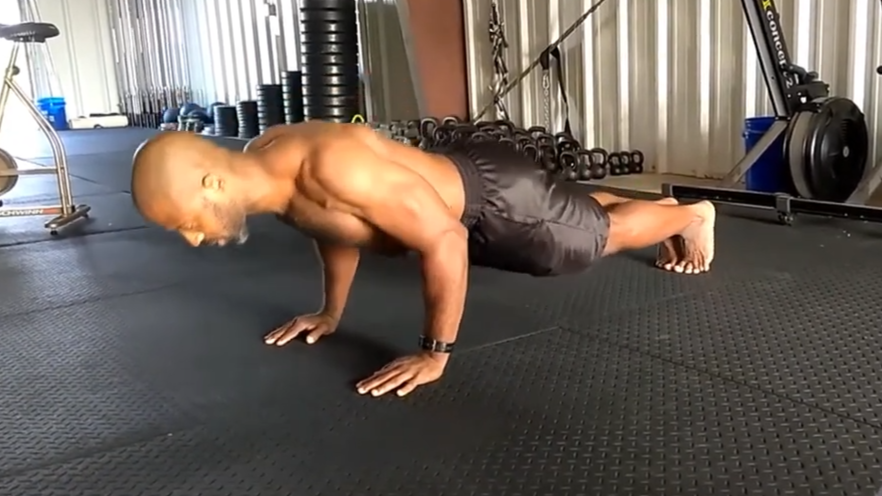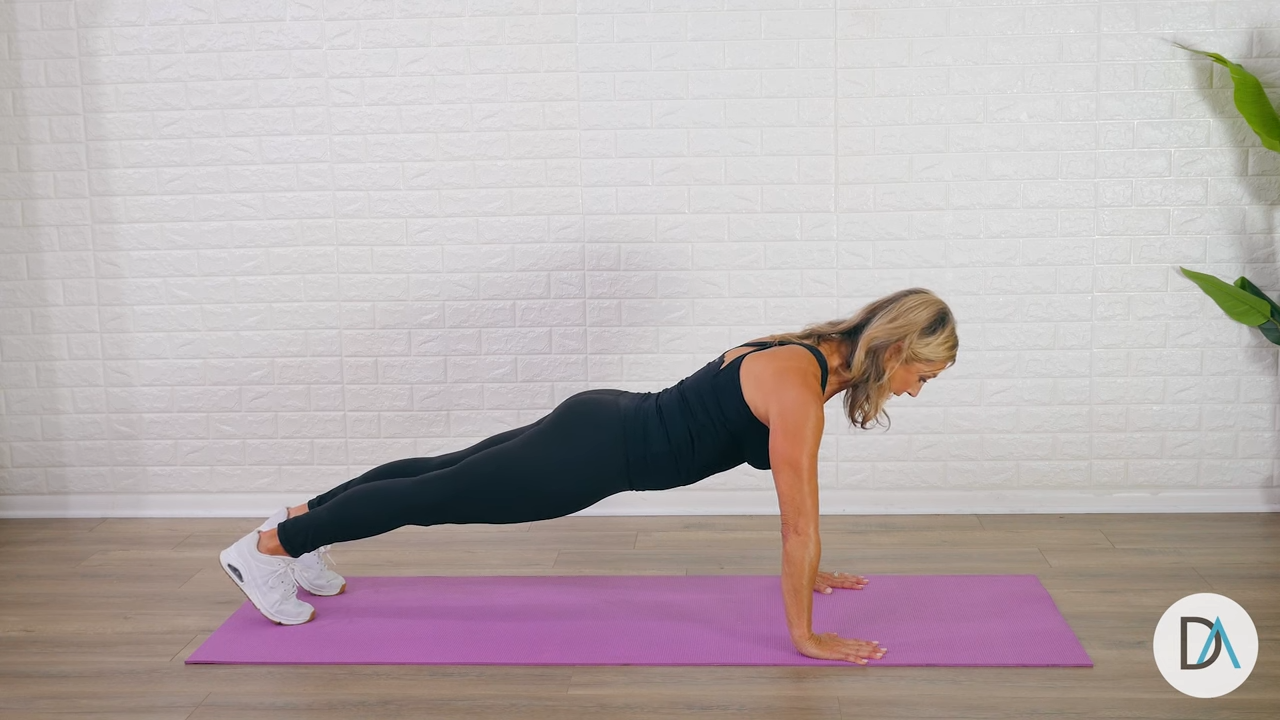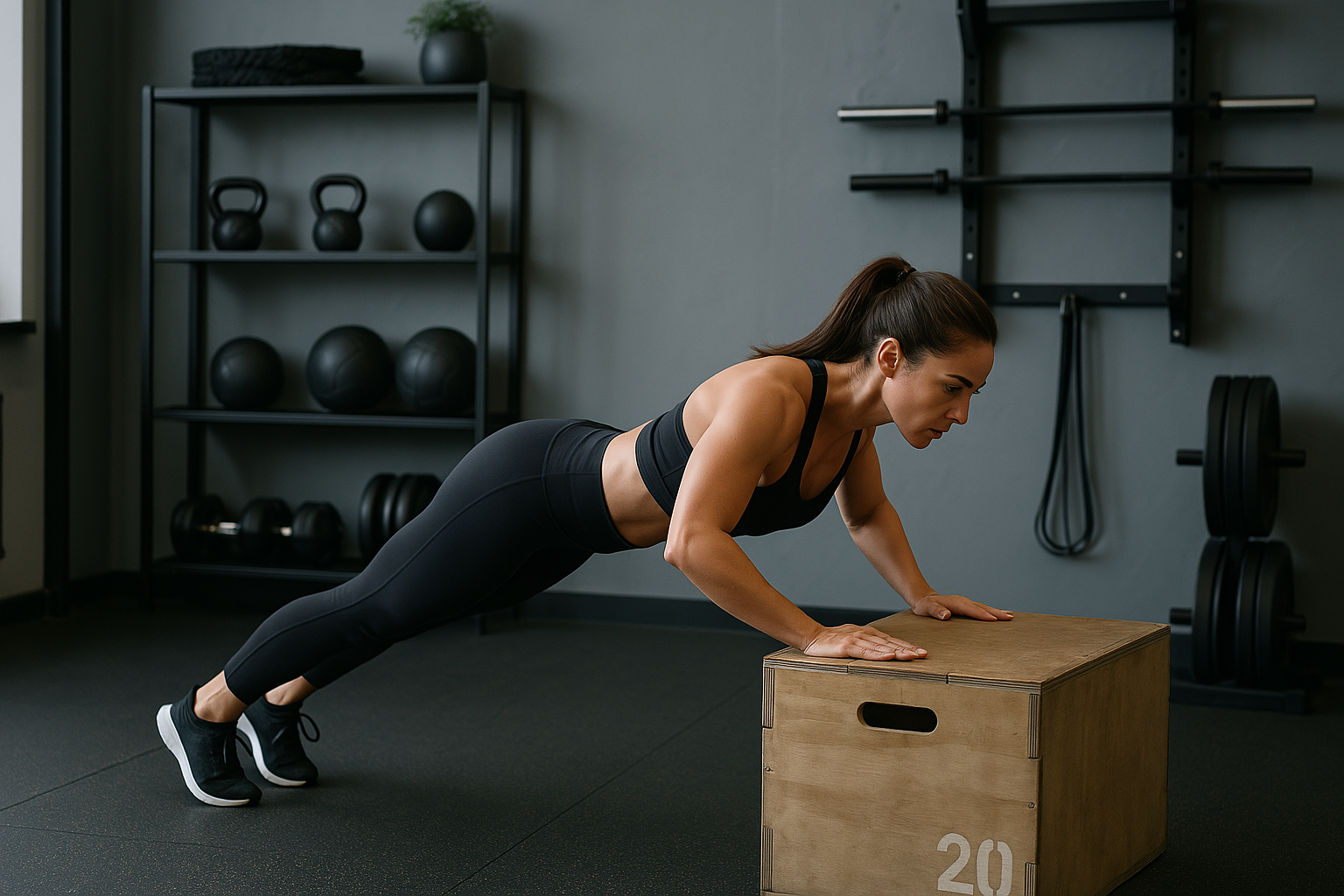
Drop and Give Me 20: Why Press-Ups Still Rule
Share
“If you want a strong house, you better build a solid foundation.” — Every coach ever, talking about the press-up (probably)
Why Press-Ups Aren’t Going Anywhere
In an age of fancy machines, high-tech gyms, and resistance bands with Bluetooth, it might be surprising to learn this: the humble press-up (yes, press-up, not push-up) is still one of the best upper-body exercises you can do.
Here’s a stat that should make you stop and think: a study published in the Journal of Exercise Science & Fitness found that press-ups at 40% of your one-rep max (1RM) produced similar muscle growth and strength gains as bench pressing over eight weeks. That’s a big deal.
Press-ups are effective because they utilise your body weight for resistance, making them a challenging and efficient way to build upper body strength. We’re talking serious strength with zero equipment. Just the floor beneath you.
The Primary Press-Up: Simplicity That Scales
What Is the Primary Press-Up?
The primary press-up—what most call a “standard push-up”—is the foundation of all press-up training. The starting position is crucial: hands shoulder-width apart, body in a high plank, lower down, push up.
But that simplicity hides a complex truth: this move trains far more than just your chest.

Multiple Muscle Groups Worked in the Primary Press-Up
- Pectorals (chest muscles) – Primary mover, specifically targeting the pectoralis major and minor
- Deltoids (shoulders) – Stabilise and support
- Triceps – Extend your arms on the push
- Core muscles – Keep you from sagging like a hammock
- Glutes and legs – Engage to hold body tension
And while it’s often assumed that push ups work your biceps, let’s be clear: the biceps help stabilise the movement, but they’re not a focus here. Save your curls for another day.
Will Press Ups Build Muscle?
Yes. And not just a little.
Push ups (and especially the primary press-up) are proven to build muscle when performed correctly and consistently. They engage various upper body muscles, including the chest, shoulders, and arms, which are crucial for functional fitness in everyday activities.
The trick? Progression.
Start where you are. Then, over time, make the movement harder. You don’t need a gym full of dumbbells to get stronger—your own bodyweight, gravity, and a floor will do just fine.
How to Do a Press Up (Perfectly)
Here’s your no-fluff, no-flare guide to how to do a press up properly. No shortcuts. No elbows flaring out like chicken wings. Just clean reps.
Step-by-Step
- Start in a high plank Hands directly under shoulders, fingers forward. Feet hip-width apart. Glutes and core tight.

- Lower under control Bend at the elbows, keeping them at a 45-degree angle. Lower your chest until it nearly touches the floor. Nose, chest, and belly button should be aligned.
- Pause at the bottom This stops momentum from cheating the rep. Own the position.
- Push back up Drive your palms into the floor. Keep your body in a straight line from head to toe—don’t let the hips sag or pike.
- Common Mistakes That Kill Your Press-Up Gains
Even experienced lifters mess this up. A proper start position is crucial to avoid common mistakes and ensure safety and effectiveness during the exercise. Fix these to get more from every rep:
❌ Letting Your Hips Sag
Usually caused by a weak core. Fix it by squeezing your glutes and engaging your abs throughout the movement.
❌ Elbows Flaring Out
This strains your shoulders. Keep elbows close to your ribs, aiming for that clean arrow-shape with your arms.

❌ Speeding Through Reps
If you can’t control it, you don’t own it. Slow down the tempo—3 seconds down, 1-second pause, 1 second up.
Press-Up Variations for Every Level
Once you’ve mastered the primary press-up, it’s time to explore the different push up variations available for various fitness levels. These variations, such as incline, decline, diamond, and plyometric push-ups, allow you to stay challenged and enhance your strength training, whatever your ability.
Incline Press-Ups and Knee Push Ups (Best for Beginners)
Incline push ups with hands elevated on a box or bench reduce the load while reinforcing correct form, making them beneficial for beginners.

Decline Press-Ups (Upper Chest Emphasis)
Feet elevated on a surface, decline push ups increase resistance and shift focus to upper pecs and shoulders.
Diamond Press-Ups (Triceps Focus)
Hands form a triangle under your chest. This diamond push up variation, known as diamond press-ups, is very demanding—expect to feel your triceps scream (in a good way).
Plyometric Press-Ups (Explosive Strength)
Add a clap. Or just lift your hands off the floor with force. Advanced only, and best done when fresh.
Real-World Upper Body Strength. Real Health Benefits.
This isn’t just about looking good. It’s about being functionally strong.
Research published in JAMA Network Open showed that men who could perform 40 consecutive push ups had a significantly reduced risk of cardiovascular disease. That’s not just impressive—it’s lifesaving.
Add to that improved blood pressure, cholesterol levels, and posture… and it becomes clear: the press-up earns its keep.
Health Benefits of Press-Ups
Improves Heart Health and Reduces Mortality
Regular push-ups are more than just a muscle-building exercise; they’re a boon for your heart. A 10-year study involving male firefighters revealed that those who could crank out 40 or more push-ups a day had a significantly lower risk of mortality and improved cardiovascular health. Why? Because each push-up strengthens your muscles and gets your heart pumping, delivering more blood to various parts of your body. So, the next time you drop for a set of regular push-ups, remember: you’re not just building upper body strength—you’re investing in a healthier, longer life.
May Reduce the Risk of Cardiac Events
Push-ups might also be your heart’s best friend when it comes to warding off serious cardiac events like heart attacks and strokes. A 2019 study found that individuals who could perform 40 push-ups had fewer cardiovascular disease events compared to those who struggled to complete 10. This is because push-ups improve cardiovascular health by strengthening the heart and enhancing blood flow. So, if you’re looking to keep your ticker in top shape, adding more push-ups to your routine could be a game-changer.
May Improve Body Composition
Want to improve your body composition? Push-ups can help with that too. A study on 18 men who engaged in progressive push-ups for 8 weeks showed increased muscle mass, improved muscle strength, and enhanced muscular endurance. This is because push-ups activate multiple muscle groups, including your upper body and lower body muscles, leading to better overall muscle mass and body composition. So, whether you’re aiming for a leaner physique or just want to feel stronger, push-ups are a solid choice.
How Many Calories Are Burned Doing Push-Ups
While push-ups might not torch calories like a high-intensity cardio session, they still pack a punch when it comes to burning energy. Each push-up uses about 6 METs (metabolic equivalent), translating to roughly 0.5-1 calorie per repetition. For a 70kg person, that’s about 4-6 calories burned per minute of push-ups. While this might not seem like much, the benefits of push-ups extend beyond calorie burning. They improve muscular endurance and boost your metabolism, which can aid in weight loss when combined with a healthy diet and regular cardio exercise. So, next time you’re wondering how many push-ups to do, remember that every rep counts towards a fitter, leaner you.
Putting It All Together: Your Press-Up Protocol
Want results? Do this:
Weekly Press-Up Plan (Beginner–Intermediate)
- Day 1: 3 sets of incline press-ups (10–15 reps)
- Day 2: Rest or mobility
- Day 3: 3 sets of primary press-ups (6–12 reps)
- Day 4: Rest
- Day 5: 3 sets of diamond press-ups (as many push ups as possible with clean form)
- Day 6/7: Optional mobility or light activity
Track your form, not just your reps. Quality > quantity. Always.
Push-Ups for Weight Loss
How Many Calories Are Burned Doing Push-Ups
While push-ups might not torch calories like a high-intensity cardio session, they still pack a punch when it comes to burning energy. Each push-up uses about 6 METs (metabolic equivalent), translating to roughly 0.5–1 calorie per repetition. For a 70kg person, that’s about 4–6 calories burned per minute of push-ups. While this might not seem like much, the benefits of push-ups extend beyond calorie burning. They improve muscular endurance and boost your metabolism, which can aid in weight loss when combined with a healthy diet and regular cardio exercise. So, next time you’re wondering how many push-ups to do, remember that every rep counts towards a fitter, leaner you.
Final Thoughts on the Benefits of Push Ups
The primary press-up is a deceptively simple movement that delivers massive value.
It’s accessible, scalable, and rooted in science. Whether you’re looking to build muscle, improve health, or simply master your own bodyweight, this movement has something for you.
So the next time someone tells you press-ups are “just for beginners,” smile politely—and drop and give them 20.
Want more pro-level insights on strength training and bodyweight performance? Stick around. We're just getting warmed up.
Check out Plyo Box Workouts for Strength, Speed, and Balance
